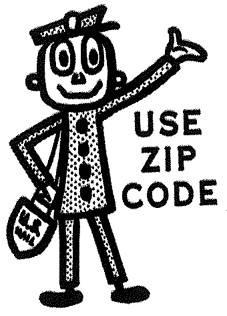 In the United States, ZIP codes are universally understood proxies for location. People often instantly recognize an address’s state or region from the first digit or two, and sometimes a full ZIP becomes well known (e.g., 90210 for Beverly Hills).
In the United States, ZIP codes are universally understood proxies for location. People often instantly recognize an address’s state or region from the first digit or two, and sometimes a full ZIP becomes well known (e.g., 90210 for Beverly Hills).
But these days, ZIP codes do much more than route mail. They are used for things like credit card identity checks; demographic data collection by the U.S. Census; real estate pricing and marketing; and (incongruously) property insurance risk rating, accumulation, and reporting. That last one may come as bit of a surprise, so let's take a look at how insurance companies use ZIP codes — and whether or not their methods make sense.
When It Makes Sense
ZIP code areas are very handy for the accumulation of natural catastrophe (nat cat) risk. Accumulation is how insurers add up all the policies they have underwritten in a way that they can understand what their exposure — or how much they might have to pay — might be for a hypothetical event. When the risk is from nat cat, an event (flood, hurricane, wildfire, earthquake, hail, etc.) will impact a localized region only. This localized exposure to an event means the accumulation of nat cat risk needs to have a geospatial element.
ZIP codes are well suited to this purpose, since they are relatively small (compared to a state or county) and universally defined. Insurers have used them for decades to accumulate nat cat risk. In fact, zones like ZIP codes are so useful for nat cat accumulation that in 1977, Swiss Re, Munich Re, and Gerling-Konzern Globale created a similar system for the whole world called CRESTA zones, which stands for Catastrophe Risk Evaluation and Standardizing Target Accumulations.
A natural extension of accumulating nat cat risks by ZIP code was to archive claims by ZIP code. Comparing accumulation metrics and claims history is a powerful tool, and it is entirely sensible to use ZIP codes for this comparison.
When It Doesn't
There is, however, another insurance-related use for ZIP codes that is not so sensible: Zip code-based underwriting, wherein all properties within a ZIP are assigned the same same nat cat risk rating. This makes no sense. The physical, geospatial, and geological attributes of a ZIP code are far from uniform, and the influence of those characteristics are what determine the likelihood of something happening at a given location. Even underwriting for house fire based on ZIP makes little sense, because every house in a residential ZIP code is a different distance to the nearest fire station and fire hydrant.
Since there are datasets and analytics available that offer a much more refined view of risk (down to house level for some perils), the use of ZIP code underwriting criteria is a source of underwriting leakage. A flat rate for a ZIP code means that some properties are underpriced, and some overpriced. One response might be to say that it all evens out. A more competitive and compelling response is to use refined analytics for risk-based pricing for every location in the ZIP — be aggressive on the lower risk locations, and price yourself out of the conversation on the high risk property.
The Experts Agree
Insurers in arguably the most sophisticated domestic flood insurance market agree: In the United Kingdom, the migration away from post-code level flood insurance pricing started in 2002, with Norwich Union (now Aviva) and Intermap. Norwich Union did the same in Ireland in 2003.
Further support for the idea that ZIP codes are too coarse for underwriting comes from the actual inventors of the ZIP codes — the United States Post Office. In a white paper from 2013, the Post Office explored the concept of improving their “physical to digital” translation of locations through mass geo-coding. The paper specifically identifies insurance underwriting as an activity based on ZIP codes:
“The third category includes firms for whom the use of the ZIP Code allows them to provide a better, more efficient product without major use of the mail system. Examples include … an insurance company that uses the ZIP Code to determine the risk and thus set appropriate premiums for subsets of its customers.”
The paper goes on to estimate the value added to the insurance industry (along with the financial and real estate industries) at $1.5B, through formulae I can’t begin to understand. The addition of building-level geocodes to the ZIP system is seen as being better suited for “weather hazard identification like fire or flood hazard zones,” and thus increasing the value to the insurance industry and other similar users.
It's Time to Move On
Nothing has been done yet by the Post Office, but there is no reason insurers shouldn’t move beyond ZIP code-based underwriting now. The necessary data and analytics exist, in software that can easily be accessed or integrated into existing systems. It's also easy to imagine basing nat cat accumulation on geographical areas that make more sense than 100-year-old postal route groupings, but only after underwriting gets done based on where a house is located, and not which mailman brings the mail.
